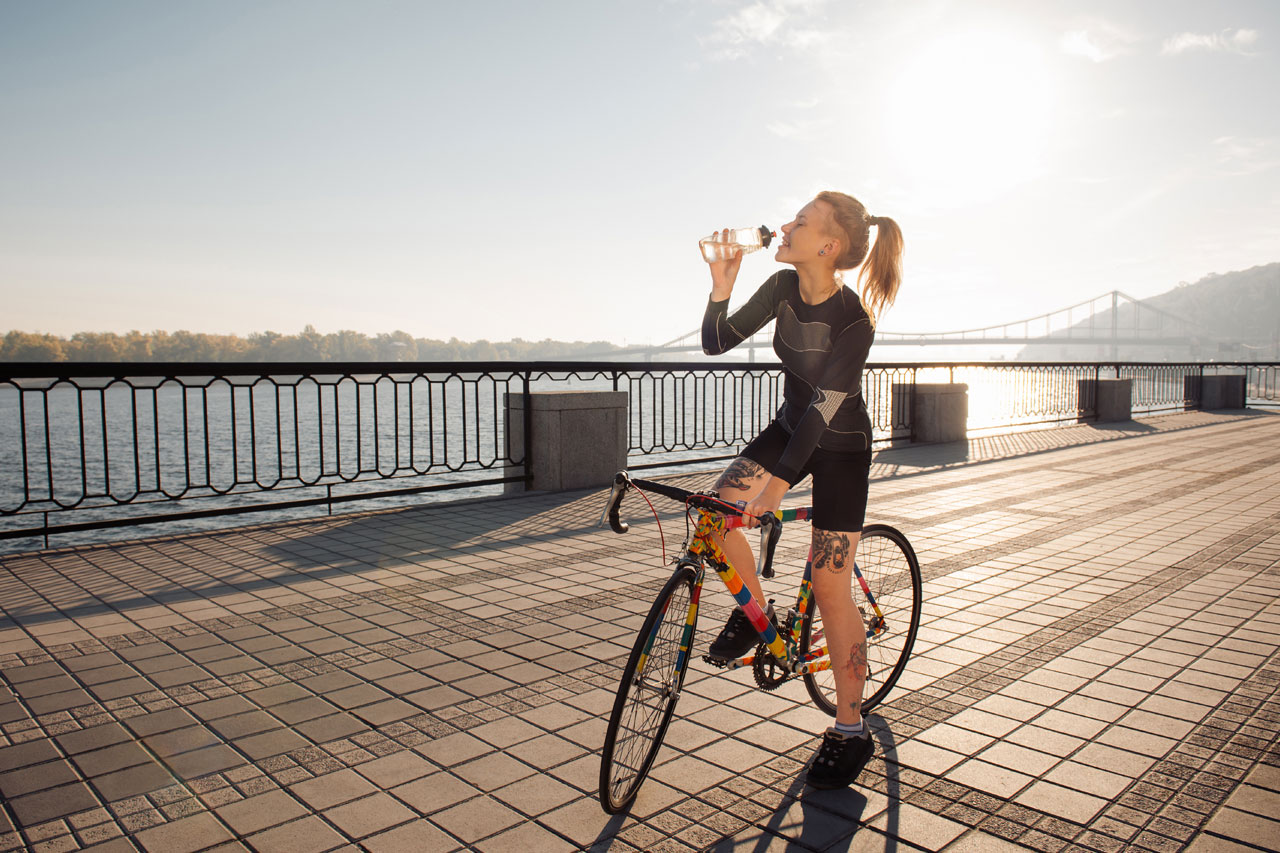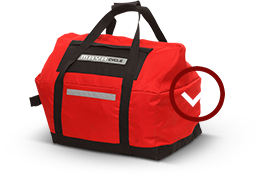Whether you’re sweating through your morning cycling commute or tackling the searing tarmac on a bike touring trip, it’s important to keep one thing in mind: hydration. Pounding fluids and sports drinks isn’t just for pro athletes. Consuming enough fluids and electrolytes will help improve blood flow to muscles and skin, support muscle contraction, regulate body temperature and heart rate and prevent hyponatremia, which results from low sodium levels in the blood. A hit of the clear stuff also helps your body recover and improves performance. Here are some common questions regarding hydration.

How much hydration?
Timing is everything with hydration. The goal is to keep a steady level of fluids and electrolytes in your system for the duration of your cycling trip. If your day looks like a hot one or you know your exertion level will be high, start sipping water as soon as you get out of bed. Aim to consume at least 12 fluid ounces (approx. one water bottle) before the ride begins. Then when you’re on the bike, sip water at regular intervals. For an intense ride, try to finish 16-24 ounces per hour. Everyone’s hydration needs are different, but downing 12-16 ounces an hour in the heat is a good place to start.
When do I need electrolytes?
Electrolytes allow your cells to generate energy, keep your muscles contracting and are responsible for moving fluids through the body. When you exercise in hot weather, you sweat out important electrolytes like sodium, potassium, magnesium and calcium. To keep your body in balance, it’s important to replace these minerals. For short or easy bike rides, there’s no need to supplement, just keep sipping water. For rides that are intense, take place on hot days or last more than an hour, consider adding a sports drink (which will also provide carbs for energy and electroytes) or an electrolyte supplement such as Hammer Endurolytes, NUUN, Camelbak Elixir or S-Caps. Plain salt or Morton’s Lite salt also fit the bill. Just be sure to add a source of potassium (banana) if you’re using the plain salt. The goal is to keep your levels in balance, so avoid chugging a drink or chewing an entire salt tablet. Drink on a schedule, not by thirst. When you feel thirsty, you’re already dehydrated.

How can I keep this simple?
- Are there salt stains on your clothes and helmet straps? This likely means you’re a salty sweater and should focus on finding a drink with more sodium (each varies).
- Want to estimate fluid loss? Weigh yourself right before and after you ride your bike.
- Hate drinking water or hate warm water? Try adding a squeeze of lemon to the bottle or nosh on juicy fruits like kiwis, watermelon and grapefruit. For long rides, add water to a third of your bottle the night before and stick it in the freezer. The next morning, top off the bottle and enjoy chilled refreshment all the way to the office. You can also keep things cool with insulated water bottles, available from companies like Polar and Camelbak.










